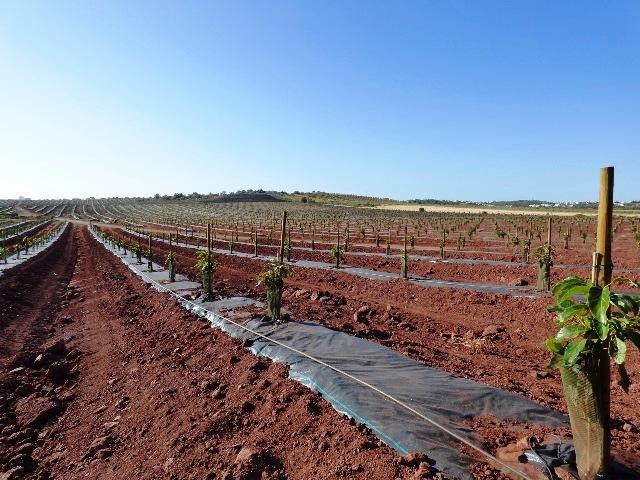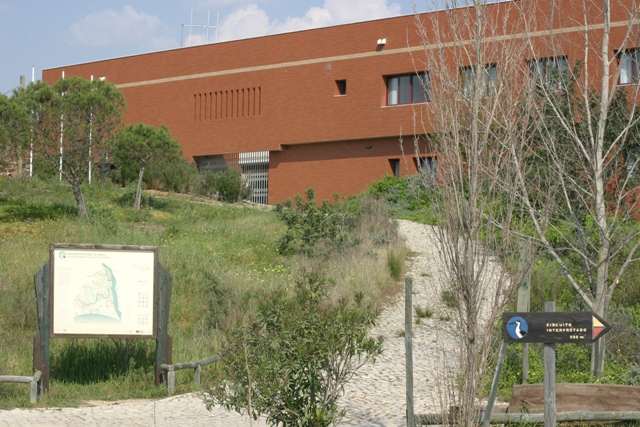The Hidden Price of Food Fads
Sue Parker looks at the real price of food fads
Based on an article by Sue Parker in Algarve Resident, October 2014. Algarve Resident is the leading English-language newspaper and the source of essential information for Residents and would-be Residents in the Algarve. More information about Algarve Resident...

A monoculture desert stretches as far as the eye can see.
Following the dire news of acres of Italy being dug up in order to grow more of the grapes used to produce Prosecco for the British market, which cannot get enough of the stuff, is the equally dreadful news from the Algarve region of Portugal, whose farmers are stoking the latest food craze for the avocado pear - and making a fast buck, of course.
In Italy the big issue is soil erosion caused by the increasing numbers of unsustainably managed vineyards being created to produce Prosecco. It is estimated that in the main Prosecco growing area of Veneto the soil lost annually is eleven times higher than in other parts of Italy - it translates to 4.4kg of soil loss for each bottle of Prosecco. This comes at a time when the planet is even more prone to the types of weather which cause soil loss - climate-change driven torrential rain storms are much more frequent than they used to be.

Little Bustard is a rare and protected species classified as Threatened owing mainly to habitat loss and degredation as well as hunting pressure. Picture: Ray Tipper. Licence enquiry...
The awful news from Portugal is reported by Clive Viney, co-author with Ray Tipper of the wildlife bible of the Algarve - Algarve Wildlife, the natural year. It involves the grubbing up of a vast area of land close to the coast near the border with Spain for the growing of avocado pears - the darling of the trendy so-called clean-eating brigade, who simply cannot get enough of something once written off as rather tasteless and slimy. Bolstered by chopped onion, lime juice and a smidgen of chilli and then mashed, the avocado becomes palatable when spread on toast (whole grain, of course!). Worldwide sales of avocado have increased exponentially in recent years, leading to dismay in countries (mainly the poorer ones) whose farmers, often encouraged by governments eager to boost their own finances, scramble to produce totally unsustainable levels of production.
What is happening in the Algarve is truly shocking, says Clive because it has brought about the destruction of the heart of one of our most famous nature reserves, Castro Marim, and dealt an irrecoverable blow to the area's biodiversity. Ray, a renowned bird photographer and member of the Portuguese Rarities Committee, said that the change of land use will have a serious effect on the birds which take refuge at Castro Marim as well as the many other species who depend upon it.
"On 21st September this year," says Clive, "I saw to my horror that the low grassy hills, well within the strict nature reserve, were no more. Quite incredibly they had been stripped bare, layered with plastic and a vast area of many hundreds of hectares had been covered with an avocado monoculture. The area was totally lifeless. I returned on 9th October to take photographs from an open track, and although there were no private signs and I passed through no gates, a car sped to me and a young man said that I was to leave and not take photographs. What was he trying to hide? Before us was a seemingly endless environmental desert.
"The land in question was the heart of the Cerro do Bufo habitat within Castro Marim and consisted of low grassy hills that formed the western part of the reserve. On these hills in early summer pairs of rare Little Bustards bred. In winter a large post-breeding flock of Little Bustards occurred along with a good number of European Golden Plovers and Northern Lapwings. Large flocks of Skylarks and Corn Buntings graced the area, and this was perhaps the best place in the Algarve to see Great Spotted Cuckoos that in spring followed Magpies, their host species. Common Ravens were regular and often a Peregrine Falcon or a Marsh Harrier terrified the birds. Iberian Hares were commonly seen. On passage, Tawny Pipits, Yellow Wagtails and Northern Wheatears passed through, and in very cold winters I have seen both Fieldfares and Redwings there. But alas, this will happen no more."
To put this into context, the nature reserve known to us simply as Castro Marim is officially called Reserva Natural do Sapal de Castro Marim e Vila Real de Santo Antonio. It was established in 1975 to protect the natural environment and landscape and is an internationally important Ramsar (Wetland) Site. The Portuguese organisation responsible for the management of Castro Marim is the Instituto da Conservação da Natureza e da Forests (ICNF), some of whose officers are based in the Information and Exhibition Centre situated in the reserve. Despite their presence, the standard of management of the site over many years has been deplorable.
Clive describes the situation there: "As is well known, this Centre is nothing short of a disgrace. Although a relatively new building, it has never been maintained and the public are all but discouraged from entering. It is not open at the weekends, closes for long lunches and at other times a half-open sliding gate discourages all but the most curious from entry. All external signage is either unreadable or has fallen down, and the few trails are either overgrown or difficult to follow. A birdwatching hide is permanently locked but would be of little use, as the area it faces has not been managed. There is a patrol vehicle but it never seems to leave the car park; this may be because, to save the bother of patrolling, huge areas of the reserve were made out of bounds. For example, there was no sound environmental reason for closing the outer track at Cerro do Bufo, which the operator seldom used and was happy to see birdwatchers enjoy their day out. In any event, it is now academic because that track just follows the sterile monoculture."

A disgrace - the Castro Marim Centre funded by public money but rarely accessible to the public
Castro Marim consists of an intricate mosaic of habitats, which are home to vast numbers of birds, insects, fish, flowers and other wildlife that are being increasingly marginalised by unsustainable development in other parts of this once wild and beautiful part of Portugal. Many of these species have nowhere else to retreat to, and every incursion into the few remaining areas supposedly set aside for them is a further significant step towards their extinction in the Algarve.
This wanton act of habitat destruction must have been approved by ICNF. Surely the public deserve an explanation.
What we eat is increasingly influenced by marketing, often via social media, where companies and individuals in pursuit of profit seek to manipulate us into following highly specific diets or eating particular foodstuffs that promise (often suspect) health benefits. Far better is to eat in moderation a wide variety of seasonal food sustainably grown as near home as possible. Not only will we benefit, but so will the planet.
Sue Parker is a director of First Nature
For more information about Clive Viney and Ray Tipper's book...

